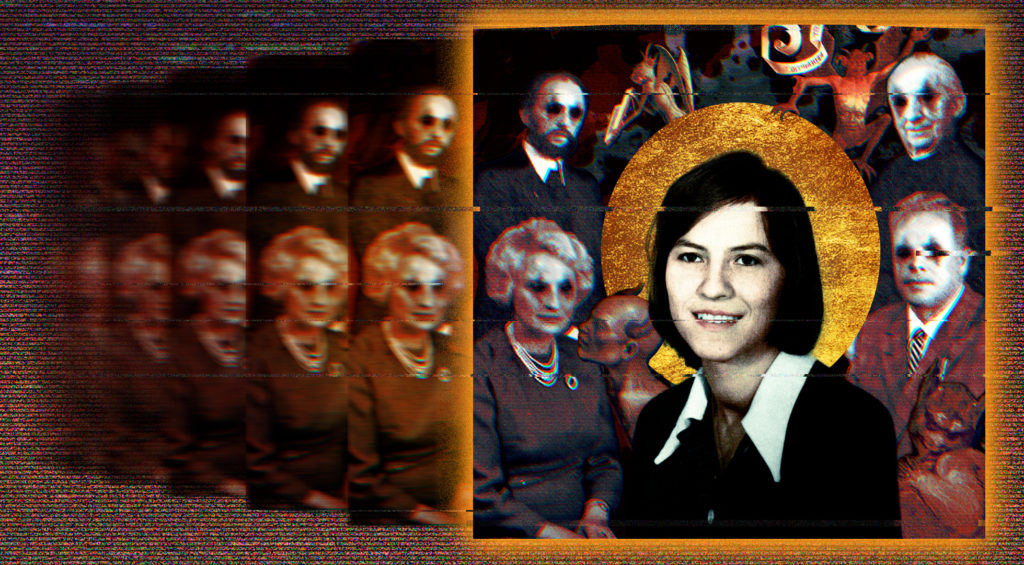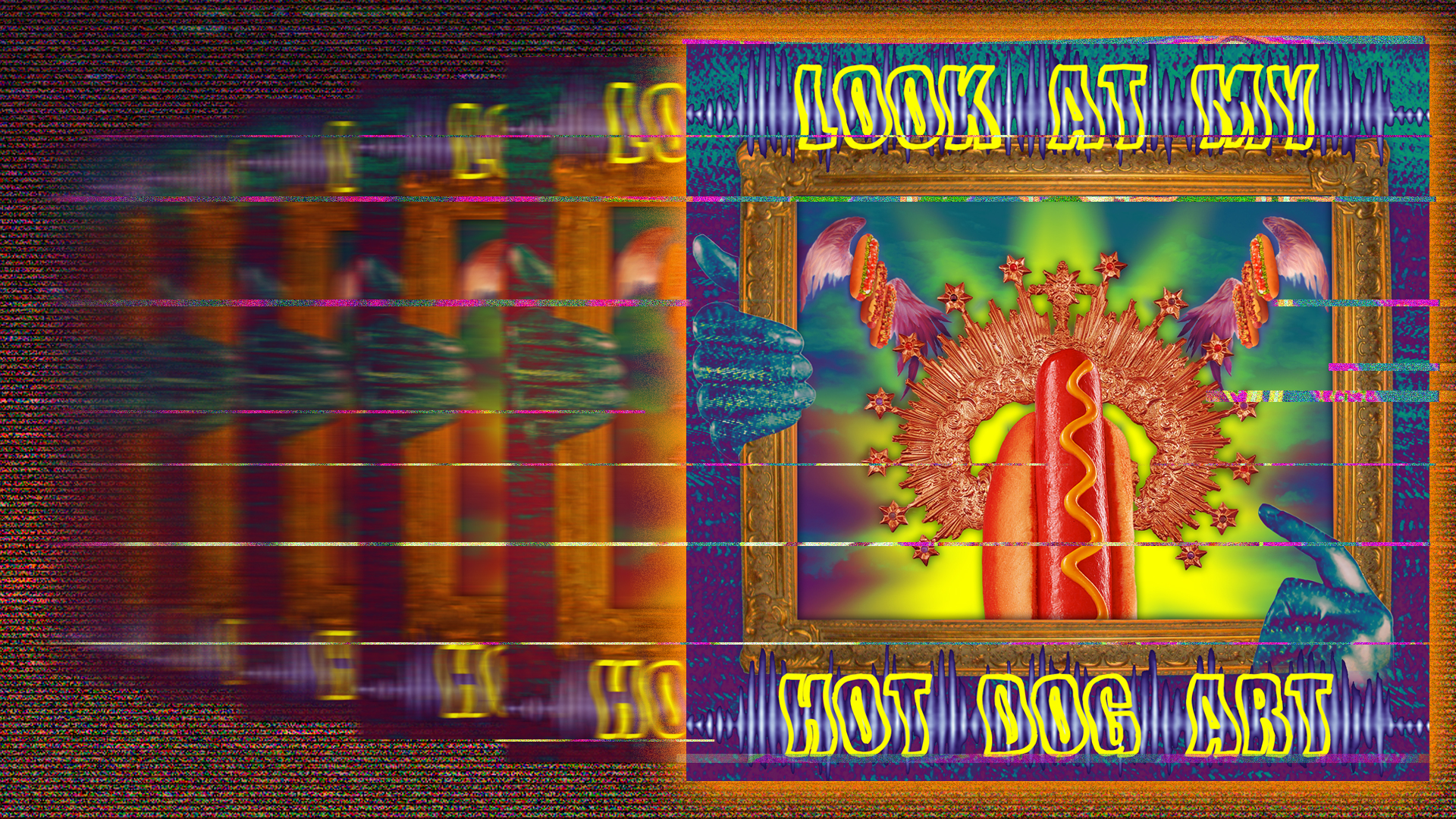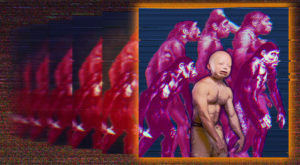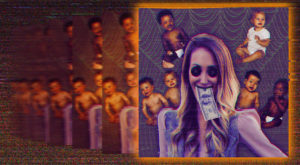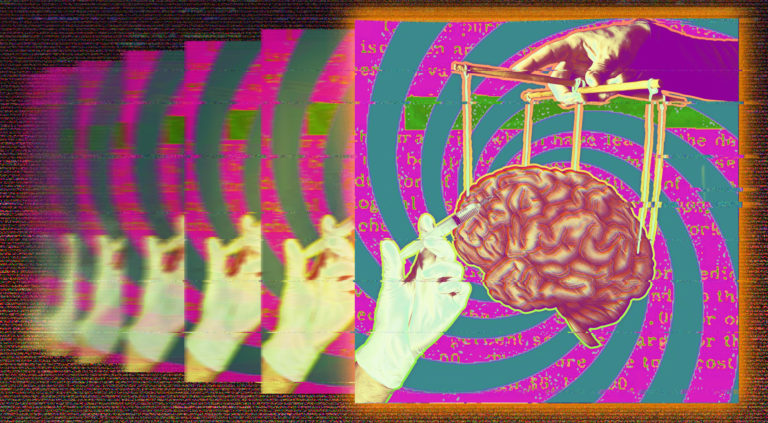I started this research thinking it would be a light-hearded romp with spooky stories and mainly just paranoia, but later joked that we’d have to record the episode lying on the floor in complete despondency.
As I researched, I began to see a pattern of extreme cruelty, abuse, and murder in relation to belief systems around demons and exorcisms that I couldn’t just ignore in order to fulfill my desire to create a funny podcast episode. I chose to take on the case of Anneliese Michel as I find it to be the most widely cited by believers as a clear-cut case of demonic possession and the devil’s desire to possess souls.
You can see all over the internet that people love to talk about this as a “oh, so spooky and fun” exorcism story and they fail to see the reality, that Anneliese was suffering greatly from a couple of obvious neurological illnesses, that doctors tried to tell her family that she needed help and they didn’t listen, that her parents and the priests fed her delusions and kept her in them when they could have helped her to come out of her psychosis, and if she had received the medical help she needed just one week before her death she would still be alive today.
This is a rough ride, so I hope you’re ready.
Anneliese MichelNever would I have thought that it could be so horrible. I was thinking to myself: “I want to suffer for other people, so that they don’t go to Hell. But not that it is so difficult, so dreadful, so horrible… Sometimes, you think: “Suffering is easy”. But when it gets real hard… you don’t want to take a single step.
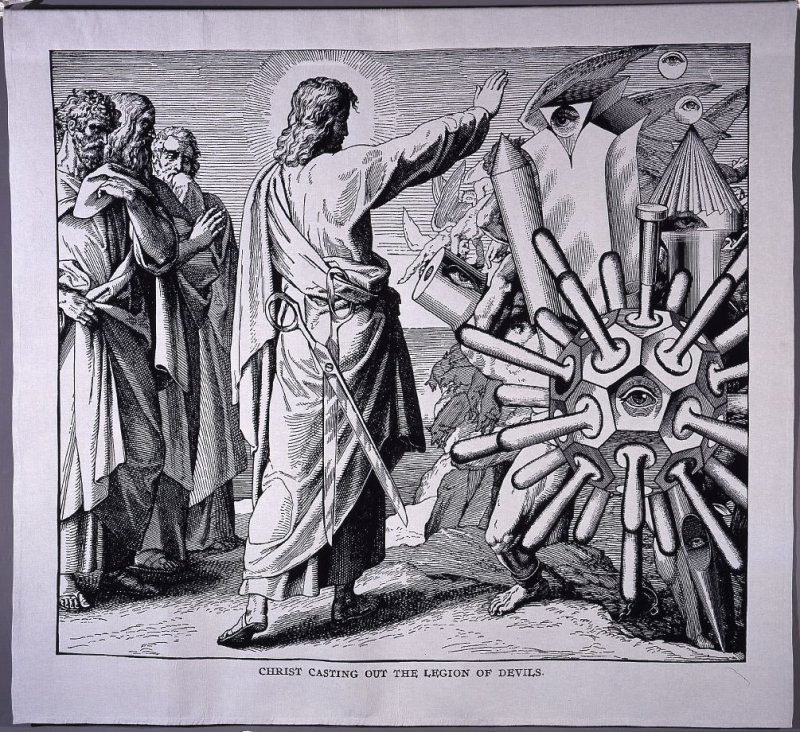
A Brief History: Demons & Exorcism in the Catholic Church
Jesus Christ's Exorcisms
Catholicism’s beliefs around demon possession and exorcisms are directly tied to the practices of Jesus Christ, so let’s explore a few that I believe relate directly to the case of Anneliese Michel.
Scapegoating in Gerasenes
The earliest account is from the Gospel of Mark (Mark 5:1-20), in which Jesus goes across the sea into the “region of the Gerasenes”. There, a man “possessed by a demon” comes from the caves to meet him. People had tried to tie him down but he was too strong to be bound, even with chains for he would always break out of them; night and day among the tombs and in the hills he would cry out and cut himself with stones.
Jesus approaches and calls the demon to come out of the man, who replies “What do you want with me, Jesus, Son of the Most High God? I beg you in the name of God never to torment me!” Jesus asks the demon for his name (the precursor for the practice of demanding the name of demons during exorcism) and is told “My name is Legion, for we are many”. The demons beg Jesus not to send them away, but instead to send them into the pigs on a nearby hillside, which he does. The herd, about two thousand in number, rush down the steep bank into the sea and are drowned.
Jesus Exorcises a Boy with Epilepsy
Mark’s account (Mark 9:17-29) describes how Jesus is surrounded by a crowd, one of whom asks for help for his son, who ‘has a spirit that makes him unable to speak’. He explains that the spirit makes him foam at the mouth, grind his teeth, and become rigid. He tells Jesus that he had asked the disciples to cure the boy, but they had been unable to do so. Jesus responds by describing the crowd and his followers as a ‘faithless generation’, and asks ‘how much longer must I be among you?’.
When he is brought to Jesus, the boy immediately experiences an epileptic seizure. Jesus asks the boy’s father how long this has affected the child; the father replies that this had been since his childhood and asks Jesus to help if he can. Jesus tells him that everything is possible to one who believes, and the man responds, ‘I believe; help my unbelief!’. Jesus then commands the spirit to leave the boy, and it does. Seeing that he looks like a corpse, many in the crowd think he is dead, but Jesus helps him to his feet.
Afterwards, the disciples ask Jesus why they were unable to cure the boy and he explains, ‘This kind can come out only through prayer’. Some sources add, ‘and through fasting’.
Jesus is a Demon???
Jesus exorcising a mute is the last of a series of miracles of Jesus recorded in chapter 9 of the Gospel of Matthew. I think it’s telling that, in a time where exorcisms were already taking place often for everything from illness to a woman running off at the mouth, all it takes for the Pharisees to think Jesus is possessed himself is that they don’t like him or his actions.
According to the Gospel of Matthew, just as the two blind men were healed by Jesus were going out, a man who was demon-possessed and could not talk was brought to Jesus. And when the demon was driven out, the man who had been mute spoke. The crowd was amazed and said, “Nothing like this has ever been seen in Israel”.
But the Pharisees said, “It is by the prince of demons that he drives out demons.” The charge reappears, with the addition of the name of “Beelzebub” as the ruler of the devils, in Matthew 12:24.

Catholicism's Relationship with Exorcism
While exorcism has been practiced in some form or fashion since religion has existed, the Middle ages saw possession as a common excuse for every sickness, social issue, and mental illness, for which exorcism was the cure. So rampant were these back-alley exorcisms that the Catholic Church determined there needed to be some regulation around it…shit was getting dangerous.
“De exorcismis et supplicationibus quibusdam” (meaning “Of Exorcisms and Certain Supplications”) is an 84-page document of the Catholic Church, containing the Rite of Exorcism authorized for use in the Latin Church. While the first version was written in 1614, it is the last liturgical book to be revised following the Second Vatican Council of 1962-1965, having been re-published in 1999.
Following the trends in Catholic approaches to alleged cases of possession since the pontificate of Leo XIII in the 19th century, the new revision includes a warning not to confuse mental illness with demonic possession. It also removes several descriptions of Satan, which sat uncomfortably with the Church's doctrine, and states that the devil is "a spirit without body, without colour and without odour." Although taking many forms, Satan as a metaphysical or spiritual being exists without real physical attributes, but only the assumed forms. - Wiki Entry
One of the foremost considerations of the Catholic standard for possession is “not to believe too readily that a person is possessed by an evil spirit but to ascertain the signs by which a person possessed can be distinguished from one who is suffering from melancholy or some other illness.”
At least 4 elements are spelled out in the Catholic Exorcism of the Possessed.
Ability to speak and understand languages unknown to afflicted persons.
Ability to tell of unknown or future events.
A display of Powers that go well beyond the natural human condition.
Other indications that cumulatively indicate demonic possession.
The Rite has 3 fundamental requirements of Exorcists.
The priest must be of advanced years and experience.
The priest must be humble, genuinely caring, and non-desirous of fame and fortune at the expense of the people in suffering.
The priest must be cleansed of all inequities through confession, contrition, and absolution.
Common Beliefs Regarding Possession

Ed WarrenAs for changes to the body, the strength of the possessed is completely overwhelming. I have seen a possessed child throw grown adults around the room like a sumo wrestler. And a possessed adult is completely unmanageable. I know – I have been attacked by the possessed on more than one occasion, and big as I am, at two-hundred-and-twenty pounds, I can report to you that no human being could ever single-handedly fight off a possessed individual. You’re dealing with something that has the strength of six men.
Ed WarrenDuring infestation, the strategy of the demonic is to generate fear through incidents of inexplicable phenomena,” says Ed. “...The very first incidents of activity will tend to occur at exactly three o’clock in the morning. This symbolic hour, the ‘high noon’ of the demonic day, is chosen as a mocking gesture because it is in direct opposition to the traditional hour of Jesus’ death.
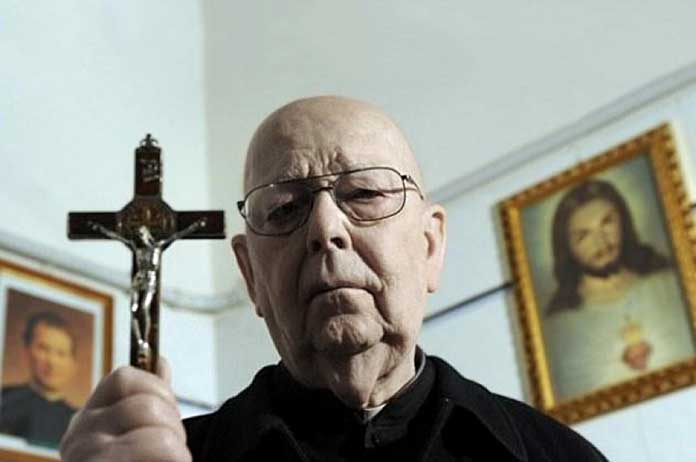
Father Gabriele AmorthOne begins with the physical symptoms. The two areas most commonly affected by evil influences are the head and the stomach. In addition to headaches that are severe and unresponsive to prescriptions, symptoms include a sudden inability to learn. In particular, young people who never had trouble at school all of a sudden cannot study anymore, and their ability to concentrate disappears. The signs listed in the Ritual are limited to the most spectacular manifestations of possession, such as the ability to speak or understand unknown languages perfectly, to know the hidden and the remote or to demonstrate a superhuman physical strength. As I have already mentioned, I was able to detect these signs only during the blessings (this is how I always refer to exorcisms), never before. Often I am told of strange or violent behavior. A typical symptom of evil influence is an aversion to the sacred. It happens then that prayerful people suddenly stop praying. Others stop going to church and become full of rage; some suddenly blaspheme often and act violently against sacred images. Almost always we also encounter asocial behavior, such as anger against relatives or acquaintances, and many types of bizarre behavior.

Father Malachi MartinAn exorcist comes to know from experience what he can expect by way of violent behavior; and, for their own sakes, possessed people must usually be physically restrained during parts of the exorcism. The assistants therefore must be physically strong. In addition, there may be a straitjacket on hand, though leather straps or rope are more commonly used.
Meet Anneliese Michel

The Parents: Anna and Josef Michel
Anna Michel
Anna Michel was extremely religious and strict. She had grown up at a time when half of her village had been drafted to fight while the other half had been sent to concentration camps. She genuinely believed that bad things would happen to her family because of their genetic or hereditary impurity. She also had an intense fear of being socially shunned because her children were not perfectly healthy and strong. She and Josef had their first daughter, Martha Michel, out of wedlock.
Josef Michel
Josef Michel was World War II Nazi soldier fighting the Russians on the eastern front. At the end of the war he fought his way back to the West to surrender to US and British forces. Like many soldiers this left him vacant and emotionally out of touch. In modern terms, Josef would most likely be diagnosed with Post-Traumatic Stress Syndrome.
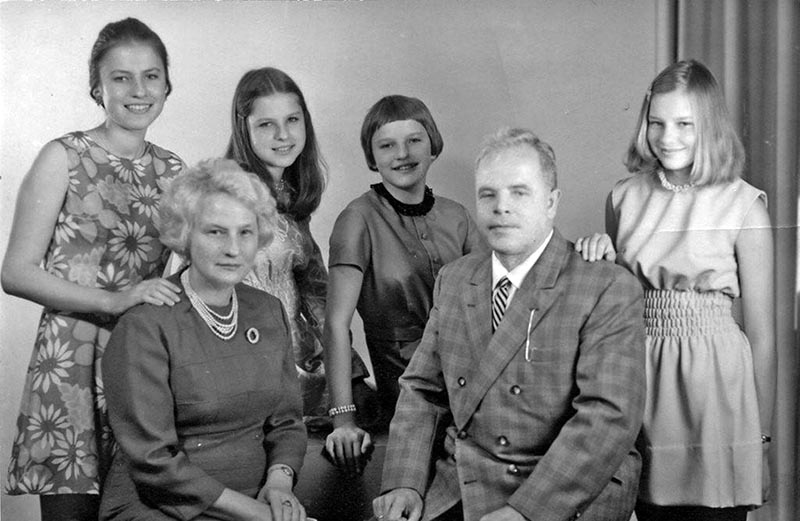
The Michel Household
Anneliese and her sisters, Roswitha, Gertrude, and Barbara were not allowed any interaction with boys in childhood. This included no overnight stays with girlfriends that had brothers. Later this included not attending school dances.
She was described as fragile and prone to illness at a young age. At a young age, Dr. Lenner diagnosed Anneliese as having a classic case of neurosis caused from a dysfunctional family. This was caused by having a father that didn’t understand her and a mother that she hated. Anneliese’s relationship with her mother was at times strained, due to Anna Michel’s overbearing nature and eagerness to protect her fragile daughter. Often this would manifest itself in the prevention of Anneliese engaging in activities that were normal for girls of her age. For example, at the age of fourteen Anneliese was stopped from attending ballroom-dancing classes due to fears of her delicate health. It was noted that Holy objects and prayers were routinely used as a means to control and discipline her daughters.
In 1965 (age 13), Anneliese was enrolled at the Dalberg-Gymnasium in Aschaffenburg, Germany. At the school, Anneliese was an exceptional student. Among courses she excelled in was Latin as well as Roman History.
Anneliese's Life Before the Exorcism
Anneliese Michel was a well-adjusted, generous, kind, unobtrusive and devoutly religious girl for her age. There had always been one story or another of her conducting herself in a generally positive manner. She was liked by many and respected by all. She was a good student, and involved in a serious relationship with a boy named Peter who by all accounts genuinely loved her.
Anna Michel, Anneliese’s mother recalls: “She liked life. She sang willfully. She was an intelligent girl. Teachers and professors always complimented her.” Anna claims that Anneliese was a very passionate and feminine girl, and in her ways of thinking, she was your typical modern woman.
Anneliese and her three sisters were raised in a strict Catholic family. Her father Josef had considered training as a priest and three of her aunts were nuns.
Four years before Anneliese was born, her mother gave birth to an illegitimate daughter, Martha. As a result, her mother suffered great shame and was forced to wear a black veil on her wedding day. When Anneliese was a child, her mother encouraged her to atone for the sins of illegitimacy through fervent devotion. When Anneliese’s sister Martha died at the age of eight during an operation to remove a kidney tumor, this likely only increased Anneliese’s desire to do penance for her mother.
As she grew older, Anneliese continued to suffer for the sins of others. When she was a teenager, she not only went to mass twice a week, but Anneliese slept on a bare stone floor to atone for the sins of wayward priests and drug addicts, who could be observed sleeping on the hard ground at the local train station. In college at West Germany’s University of Würzburg, she hung pictures of saints on her dorm room walls, kept a holy-water font near the door, and regularly prayed the Rosary.
Anneliese's Decline
The Seizure that Started it All
In the fall of 1968 (age 16), Anneliese experienced a period of catatonia during class and entered a trancelike state. Her friends noticed and tried to rouse her, with no luck. She came out of it later on her own, but was rightfully freaked out. That night around midnight, she suffered sleep paralysis and felt a heavy weight upon her. She urinated on herself and then recovered. She described it as being trapped in her body with a pressure on her stomach. She wasn’t the same after this.
Neurology Findings and Further Medical Issues
In August 1969, the events of 1968 repeated themselves.
Dr. Vogt, the family physician in Klingenberg was consulted. After examining Anneliese, Dr. Vogt referred her to a neurologist named Siegfried Lüthy.
Dr. Lüthy found nothing in his initial examination but ordered an electroencephalogram (EEG) for her on 27 August 1969. The EEG showed normal results. And while the doctor believed Anneliese to be experiencing grand mal seizures, since she had only had the two events, no medicine was prescribed.
While undergoing the evaluations by Dr. Lüthy, Anneliese Tonsils became enflamed and she had a tonsillectomy. Shortly after the operation, Anneliese contracted pleurisy and pneumonia. This was further complicated by a tuberculosis infection. This forced Anneliese to withdraw from the 1969-1970 school year. The uncomfortable Anneliese frequently complained about being bedridden but these complaints were ignored by her mother with frequent loud rosaries.
In February 1970, Anneliese was admitted to a hospital in Aschaffenberg specializing in children with lung disease. Without improvement, she was then sent to a Tuberculosis clinic in Mittelberg, Bavaria.
The Trauma of Being in a Sanitorium
While in the clinic, Anneliese’s isolationist nature earned the wrath of the other children that misinterpreted her shyness for being stuck-up and anti-social. They frequently taunted her calling her “snot-nose.” While she was there, she spent her days and nights praying constantly and dedicated the rest of her time to strengthening her faith and her spiritual relationship with God. Her ultimate desire was to become a catechist, which is someone who teaches the principals of the Christian religion, especially one using a catechism.
On June 3, 1970, Anneliese Michel experienced another seizure. Similarly to before, she experienced sleep paralysis and felt a heavy weight on her, she also urinated in bed. When she recovered, her screams woke the rest of the clinic. The children that bullied her began to suggest that she was “crazy” and “possessed by the devil,” due to her contortions during the seizure, the “hateful” look on her face, and her hands and arms locked in a “claw-like” manner.
Several days later Anneliese had another event. While saying the rosary, she smelled violets and began to feel euphoric. The trance was interrupted by other students asking if she was okay. It was also noted that her hands were again locked rigidly like a cat extending its claws. The euphoria last through the next day and Anneliese attributed the event to the Virgin Mary.
Following the event, Anneliese was seen by neurologist von Haller. This time the EEG showed irregular alpha waves mixed with scattered delta waves and theta waves. As a result, it was determined that she had a form of epilepsy and anti-convulsants were prescribed.
It is also import to note that while undergoing testing at the clinic, Anneliese was diagnosed as having heart and circulation problems.
For her part, Anneliese continuously tried to recapture the spiritual euphoria and frequently spent hours praying to the Virgin Mary.
While still taking the anti-seizure medicine, other epileptic symptoms developed. The most notable occurred while she was saying the rosary one evening, Anneliese saw the image of a menacing face. She later wrote in a letter that this image had left her afraid to say the rosary. These visions continued to plague her for the rest of her life.
Back Home & More Medication Trials
As a result of her stay at the Mittelberg hospital, Anneliese Michel was actually cured of her tuberculosis, and returned home. She then began to attend high school at Aschefenburg, where everything was relatively normal up until the very end, when she began to have trouble speaking. At this time, in conjunction to the above problems, she also began to have trouble walking, often holding on to tables, chairs, beams, or any other material that would help her support her weight.
Notably, her sister reported that she was frequently angry and would go into uncontrollable rages. She also began to express hatred at the church for her condition.
No longer taking the medications from the Sanitarium, the seizures returned. She would frequently black out, develop a snarl on her face, have her arms go rigid and urinate on herself.
Anneliese became depressed and withdrawn. Rarely would she discuss her time at the clinic afterwards. Later her lifelong friend, Maria Burdich, would testify that: “After her illness, Anneliese was changed. She was quiet and withdrew from her friends.”
Early in the 1970-1971 school year, she experience another seizure at school with all the symptoms of the previous events.
This event prompted Anneliese to go to a specialist named Dr. Reichelt in Miltenberg. The circulatory issues had returned and so a heart doctor named Packhauser was consulted. In a letter from Packhauser to Dr. Vogt, Packhauser expressed concern at the increase in the frequency of the seizures.
Later, in 1976, during a recorded conversation with a priest, Anneliese would describe this difficult time:
Anneliese Michel“It is a terror which goes through all my limbs and settles there. It is a dread that makes you think you are right there, in the middle of Hell. You are totally, utterly deserted.”
Religious Obsessions Grow
Frustrated at her circumstances, she began diving headfirst into Christian literature, visiting shrines, and identifying with the suffering of the saints she was studying. She came to believe she was being made to suffer for a spiritual cause. She identified most with Barbara Weigand, a mystic in the early 1900s who claimed to manifest appearances of the Virgin Mary and Archangel Michael. Weigand later founded the Franciscan Eucharist Covenant of Love and, after death, there was a movement to beatify her.
Her family, and most specifically her ultra-religious mother, encouraged these beliefs and thought her visions of demons were sent to taunt a young girl who would become a saint. It was said, even, that Anna stated “I cannot deal with the reality of my life.” Sounds like she made something up that was more interesting and glamorous than a deeply ill daughter.
In March and April of 1973, auditory hallucinations would plague her. She would hear knocking from walls, the ceiling, and the floor. When she asked her family, they didn’t know what she was talking about. She went to an auditory specialist, but no answers could be found for what she was hearing. After it was suggested that the knocking was, what else, DEMONS, her mother began “hearing” it, too. FANCY THAT. This fuckin’ woman.
In visits with her doctor, she was prescribed Zentropil. An EEG given June 4, 1973 showed normal brain function.
Doctors are Concerned, Suggest Institutionalization
In an appointment with Lüthy on 3 September 1973, Anneliese announced that the devil was inside her a judgment of fire would be visited on everyone. Lüthy asserted that Anneliese was no longer capable of making decisions on her own.
By this point, Anneliese’s many medical conditions were relatively clear to her doctors. She was suffering from Epilepsy as well as Schizophrenic or manic depressive psychosis (now referred to as bipolar disorder).
We are Legion
Let’s get into some of the medical issues not only commonly mistaken for demon possession, but that the doctors of Anneliese suspected she was suffering. We can’t go back in time with our current DSM and modern medications to figure out exactly what was going on with her, but these are the ones I think have the most validity based on her history, her family’s medical history, and my admittedly very limited medical knowledge.
Some of the illnesses I won’t get into here because they aren’t applicable, but are totally used as “proof” of possession are Tourrette’s, mutism, OCD, Bipolar Disorder, and Borderline Personality Disorder.
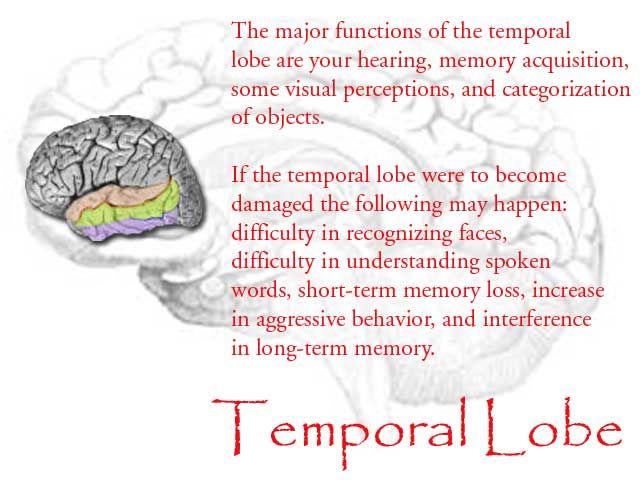
Temporal Lobe Epilepsy
Temporal lobe epilepsy is the term used when seizures occur in the temporal lobe areas of the brain. You have two temporal lobes, one of each side of your head behind your temples (by your ears). The temporal lobe is the area of the brain that processes memories and sounds, interprets vision, produces speech, understands language, controls some unconscious/automatic responses such as hunger, thirst, fight-or-flight, emotions, and sexual arousal. Most cases of temporal lobe epilepsy in adults can be further localized to the middle area of the temporal lobe (called the mesial [“middle”] temporal lobe).
Causes of temporal lobe epilepsy include:
- Unknown causes (accounts for about 25 percent of temporal lobe seizures)
- Nerve cell death, which results in scarring in the temporal lobe (called mesial temporal sclerosis or hippocampal sclerosis)
- Brain injury
- Brain infection
- Brain tumor
- Brain inflammation
- Vascular malformations in the brain
- Developmental abnormalities
- Genetic factors (family history) or genetic mutations
- Strokes, heart attack, and other conditions that lead to lack of oxygen in the brain
- Alcoholism or alcohol withdrawal
What are the symptoms of temporal lobe epilepsy?
Temporal lobe epilepsy is the type of epilepsy that accounts for the most common form of seizures called focal seizures. Focal seizures are the most common form of seizure in adults and one of the most common forms of seizures in children. There are two types of focal seizures, each of which has its own distinct signs and symptoms, as follows:
Focal aware seizures (previously called simple partial seizures without loss of awareness) means that the level of consciousness does not change during the seizure; abnormal sensations may be all that occurs. The site of this seizure is localized to a small area of the temporal lobe. These seizures last from a few seconds to 2 minutes.
Signs and symptoms of focal aware seizures include:
- Déjà vu (a feeling of familiarity), a memory, or jamais vu (a feeling of unfamiliarity)
- Sudden sense of fear or anxiety, anger, sadness, joy
- A rising sick feeling in the stomach (the feeling you get in your gut riding a roller coaster)
- Altered sense of hearing, sight, smell, taste, or touch
- Visual distortions (objects are larger or smaller than they actually are)
- Difficulty speaking or inability to speak
Focal impaired awareness seizures (previously called complex partial seizures with loss of awareness) means that the level of consciousness is impaired to some degree. The person cannot interact with the surrounding environment as they normally could. The site of this seizure is a localized area but then spreads to other areas of the temporal lobe, causing the impaired awareness.
These seizures tend to have an aura before they occur. An aura is a “warning sign” that happens before this type of seizure occurs. The aura is actually considered a seizure itself – it is a focal aware seizure – that, in this case, has progressed to a focal impaired awareness seizure.
These seizures last from 30 seconds to 2 minutes.
Signs and symptoms of focal impaired awareness seizures include:
- Staring
- Repetitive behaviors and movements (called automatisms) of the hands (such as fidgeting, picking motions), eyes (excessive blinking), and mouth (lip smacking, chewing, swallowing)
- Confusion
- Unusual speech; altered ability to respond to others
- Brief loss of ability to speak, read, or comprehend the spoken word
Other types of seizures can involve the temporal lobe. One type, called focal-to-bilateral seizures, begin in the temporal lobe and then spreads to involve both sides of the brain.
In the case of Anneliese Michel, it is necessary to mention that in the late 1960s and early seventies, epilepsy was not as well understood as it is today. The MRI machine, for example, was not invented until 1977, meaning that a full picture of the brain was not possible when Anneliese was diagnosed with epilepsy. In addition, there exists a drug-resistant form of epilepsy, which accounts for some 20 to 40 percent of epileptics, equal to around 400,000 people in America alone.34 It is therefore not impossible for Anneliese’s epilepsy to have been unresponsive to medication.
Epilepsy can cause complex auditory verbal hallucinations (AVHs). Most often the AVHs are experienced in epilepsy patients with damage to the left temporal cortex.
Psychosis Secondary to Epilepsy
The World Health Organization estimates that 50 million people worldwide have epilepsy, making this one of the most common neurological disorders, along with stroke and Alzheimer’s disease. Epilepsy is associated with a well-documented range of neurological and physical sequelae, as well as a range of psychological and social stressors and effects. It is not surprising, then, that psychiatric comorbidities are frequent in epilepsy, with research demonstrating their presence in 39%−54.1% of all epilepsy patients, and 10% of all inpatients in one psychiatric hospital had diagnosed epilepsy. The crossover between neurological and psychiatric symptoms is apparent.
Psychotic syndromes are found in prevalencey rates from 4-7% in people with epilepsy; adding up to around 15% more frequently in people with Epilepsy than in the general population. The prevalencey rate increases from significantly with Temporal Lobe Epilepsy, from 7-11%.
Psychoses of epilepsy are generally classified into three main patterns: ictal, postictal, and interictal psychoses.
Ictal psychosis (IP) occurs concurrently with epileptic seizures and is usually a manifestation of nonconvulsive status epilepticus (SE), wherein the brain is in a constant state of seizure. Hallucinations or delusions are often not evident; instead, symptoms may take the form of unusual thoughts and behaviors, such as picking at clothes and oral activity. Although the patient is amnesic for this episode, insight remains intact; this can result in misinterpretation of the symptoms by the patient, which can result in further cognitive and behavioral disturbances. This form of psychosis is usually brief, generally lasting only hours. It is believed that IP often remains undiagnosed, with the seizure often imperceptible without an electroencephalogram (EEG); instead, it may appear to be primary psychosis (in cases where epilepsy is undiagnosed) or a state of stupor or delirium. As such, research on this form of psychosis is rare.
Postictal psychosis (PIP) happens when a seizure is followed by psychotic symptoms, often with a period of lucidity of up to 72 hours’ duration in-between. This often occurs after seizure clusters or after an increase in seizure frequency.9 PIP typically begins with anxiety, insomnia, and feelings of oppression, before presenting through symptoms including delusions, hallucinations, catatonia, and manic or depressive mood. It typically resolves within a few days, but can last up to a month. PIP recurs, on average, 2–3 times per year, and may become chronic in a minority of people, developing into IIP in about 10% of people.
Interictal psychosis (IIP) is not temporally related to seizures, and can occur even when seizures are infrequent or controlled. IIP episodes last for several days or weeks, and typically present as affective symptoms, paranoid delusions, auditory hallucinations, and mystical experiences. Affect and cognition are relatively preserved throughout. Just before the onset of IIP, other symptoms may be seen, including insomnia and anxiety, and it has been suggested that anxiolytics given at this early stage may prevent the development of a psychotic episode.
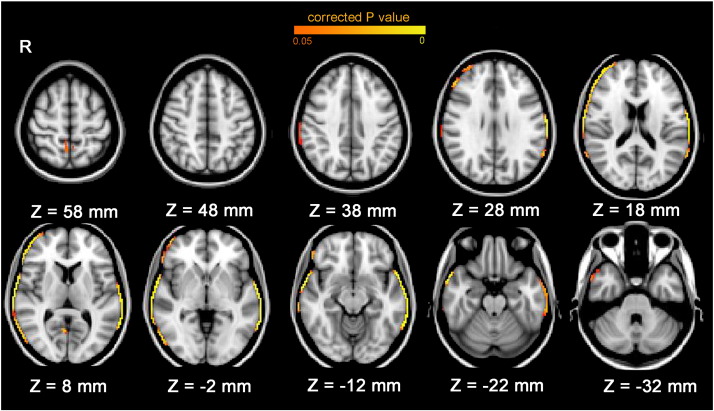
Schizophrenia
**Positive symptoms: “**Positive” symptoms are psychotic behaviors not generally seen in healthy people. People with positive symptoms may “lose touch” with some aspects of reality. Symptoms include:
- Hallucinations
- Delusions
- Thought disorders (unusual or dysfunctional ways of thinking)
- Movement disorders (agitated body movements)
Negative symptoms: “Negative” symptoms are associated with disruptions to normal emotions and behaviors. Symptoms include:
- “Flat affect” (reduced expression of emotions via facial expression or voice tone)
- Reduced feelings of pleasure in everyday life
- Difficulty beginning and sustaining activities
- Reduced speaking
DSM-5 Criterion for Schizophrenia (which has seen subtypes of schizophrenia have been removed)
Must have Two Criterion A Symptoms for one month
- delusions
- hallucinations
- disorganized speech
- disorganized behavior
- negative symptoms
One must be a “core Symptom” – delusions, hallucinations, disorganized speech
Functional Decline
Total Duration of Symptoms – 6 month
Cognition and cognitive deficits are critical in determining schizophrenia.
Historically, Antipsychotic treatment leads to very small improvements in cognitive tests.
Duration of Untreated Psychosis is a determining factor in good outcomes – earlier intervention means better outcome, higher percentage of remission
1st gen and 2nd gen antipsychotics are equal in efficacy, 1st gen is less well tolerated by patients
Comparative Efficacy Meta-Analysis testing the efficacy of 15 anti-psychotics was done, including clozapine, olanzapine, haloperidol. Clozapine was significantly more effective than others, with risperidone and olanzapine being a distant…and i mean distant second. Haloperidol had the highest of all cause discontinuation due to tolerability.
Tardive Dyskinesia is a common risk factor of first generation antipsychotic medications. TD causes stiff, jerky movements, twitches, and involuntary gestures.
First episode patients are incredibly responsive to medication and it’s easy to overdo it on their medications, making the side effects intolerable.
Clinical improvement with medications is incredibly slow. Positive symptoms resolve fairly quickly with medications, but negative symptoms could take months or years to go into remission. 20% of first episode patients will not respond to FGAs or SGAs.
APA Guidelines suggest most individuals are at significant risk of relapse if their medications are discontinued. Relapse rates due to discontinuation of medications are staggering. With each relapse, there is a decline in functioning, relapse creates social toxicity, and youth relapse could mean a delay in returning to the previous cognitive ability.
Most doctors with access to the case agreed that the visual hallucinations were related to the epilepsy or the onset of psychosis. It is the current belief by the medical field that “While the majority of hallucinations reported in primary psychotic disorders are auditory, they may also be visual, olfactory, tactile, or gustatory. Visual hallucinations in those with schizophrenia tend to involve vivid scenes with family members, religious figures, and animals. Reactions to these visions can vary and include fear, pleasure, or indifference… Visual hallucinations caused by seizures have often been described as simple, brief, and consistent for each patient; they usually consist of small, brightly colored spots or shapes that flash.” – Source
What causes it?
- Paternal Age – Fathers over the age of 45 have double the risk of offspring developing schizophrenia; fathers over 50-years-old are three times more likely.
- Exposure to Viruses especially in gestation. The term ‘winter babies’ refers to this phenomenon, as viruses are more common in the winter.
- Malnutrition – Babies gestated in the Dutch Hunger Winter and the Chinese Famine had double the risk of schizophrenia.
- Social factors – Children of first generation immigrants face the extreme social stress of living between two cultures. Sexual trauma or social trauma, major losses and transitions, and big social stressors also put children more at risk of developing schizophrenia.
22q11DS
- 22q11DS is known by many names such as velo-cardio-facial syndrome and DiGeorge syndrome.
- Higher instance of Schizophrenia in people with this genetic disorder.
- 22q11DS is a genetic disorder. It results from a small missing piece of genetic material (DNA) on a specific part of chromosome 22. This is called a deletion.
- The 22q11 deletion happens most of the time by chance. In some families, the 22q11 deletion can be inherited from a parent.
- People with 22q11DS may experience one or more of the associated symptoms. The most common symptoms seen are heart defects, low calcium levels, immune deficiency, speech and language impairments, and learning disabilities.
- There is no cure for 22q11DS but your child’s symptoms can be treated and managed. With appropriate support, your child can lead a happy, productive life.
A syndrome is a group of signs and symptoms that occur together due to a common underlying cause. 22q11DS can affect many parts of the body and each person with 22q11DS can be affected in a different way. Some of the common features of 22q11DS include:
- heart defects
- palate differences
- immune deficiency
- feeding and swallowing problems
- low levels of calcium in the blood
- growth delay
- kidneys that are smaller, or formed differently
- speech and language impairments
- learning disabilities
- psychiatric disorders (anxiety, attention deficit, depression, psychosis)
Some individuals will experience many of the symptoms while others may experience only a few. Every person is different.
Co-Morbidities
Depression – easy to overlook in light of presence of psychotic symptoms, but a huge factor in quality of life for the patient.
4.9% Schizophrenia patients experience Suicidal Ideation
Violence – LESS THAN ONE IN 100 first episode patients commits severe violence; even so, family members are at the highest risk of violence as well as the patients themselves, as a lot of violence is visited on folks who are outwardly “mentally ill.”
Substance Abuse – 30%.
Cardiovascular Disease has been linked with schizophrenia. CVD is the leading cause of premature death among schizophrenia patients, who die from heard and blood vessel disorders at double the rate of people without schizophrenia.
Ole Andreassen, MD, PhD - UC San Diego MedicalThese results have important clinical implications, adding to our growing awareness that cardiovascular disease is under-recognized and under-treated in mentally ill individuals. Its presence in schizophrenia is not solely due to lifestyle or medication side effects. Clinicians must recognize that individuals with schizophrenia are at risk for cardiovascular disease independent of these factors.
Dissociative Identity Disorder

Dissociative disorders are characterized by an involuntary escape from reality characterized by a disconnection between thoughts, identity, consciousness and memory. People from all age groups and racial, ethnic and socioeconomic backgrounds can experience a dissociative disorder.
Up to 75% of people experience at least one depersonalization/derealization episode in their lives, with only 2% meeting the full criteria for chronic episodes. Women are more likely than men to be diagnosed with a dissociative disorder.
The symptoms of a dissociative disorder usually first develop as a response to a traumatic event, such as abuse or military combat, to keep those memories under control. Stressful situations can worsen symptoms and cause problems with functioning in everyday activities. However, the symptoms a person experiences will depend on the type of dissociative disorder that a person has.
Treatment for dissociative disorders often involves psychotherapy and medication. Though finding an effective treatment plan can be difficult, many people are able to live healthy and productive lives.
Symptoms and signs of dissociative disorders include:
- Significant memory loss of specific times, people and events
- Out-of-body experiences, such as feeling as though you are watching a movie of yourself
- Mental health problems such as depression, anxiety and thoughts of suicide
- A sense of detachment from your emotions, or emotional numbness
- A lack of a sense of self-identity
The symptoms of dissociative disorders depend on the type of disorder that has been diagnosed. There are three types of dissociative disorders defined in the Diagnostic and Statistical Manual of Mental Disorders (DSM):
- Dissociative Amnesia. The main symptom is difficulty remembering important information about one’s self. Dissociative amnesia may surround a particular event, such as combat or abuse, or more rarely, information about identity and life history. The onset for an amnesic episode is usually sudden, and an episode can last minutes, hours, days, or, rarely, months or years. There is no average for age onset or percentage, and a person may experience multiple episodes throughout her life.
- Depersonalization disorder. This disorder involves ongoing feelings of detachment from actions, feelings, thoughts and sensations as if they are watching a movie (depersonalization). Sometimes other people and things may feel like people and things in the world around them are unreal (derealization). A person may experience depersonalization, derealization or both. Symptoms can last just a matter of moments or return at times over the years. The average onset age is 16, although depersonalization episodes can start anywhere from early to mid childhood. Less than 20% of people with this disorder start experiencing episodes after the age of 20.
- Dissociative identity disorder. Formerly known as multiple personality disorder, this disorder is characterized by alternating between multiple identities. A person may feel like one or more voices are trying to take control in their head. Often these identities may have unique names, characteristics, mannerisms and voices. People with DID will experience gaps in memory of every day events, personal information and trauma. Women are more likely to be diagnosed, as they more frequently present with acute dissociative symptoms. Men are more likely to deny symptoms and trauma histories, and commonly exhibit more violent behavior, rather than amnesia or fugue states. This can lead to elevated false negative diagnosis.
Many features of dissociative disorders can be influenced by a person’s cultural background. In the case of dissociative identity disorder and dissociative amnesia, patients may present with unexplained, non-epileptic seizures, paralyses or sensory loss. In settings where possession is part of cultural beliefs, the fragmented identities of a person who has DID may take the form of spirits, deities, demons or animals. Intercultural contact may also influence the characteristics of other identities. For example, a person in India exposed to Western culture may present with an “alter” who only speaks English. In cultures with highly restrictive social conditions, amnesia is frequently triggered by severe psychological stress such as conflict caused by oppression. Finally, voluntarily induced states of depersonalization can be a part of meditative practices prevalent in many religions and cultures, and should not be diagnosed as a disorder.
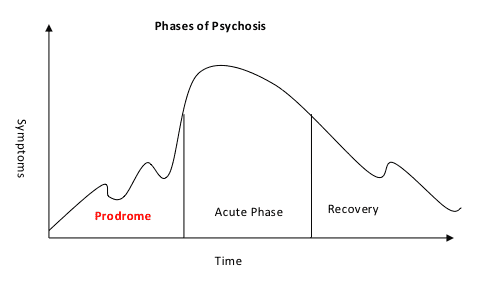
Three Stages of a Psychotic Episode
There are three stages of a psychotic episode:
1. Prodromal Phase – The onset of negative symptoms
2. Acute Psychotic Episode – Positive symptoms and psychotic break
3. Post Psychotic Episode – Positive symptoms under control, negative symptoms come back
Prodromal Phase
The Prodromal Phase of Psychosis can last anywhere from 1-5 years.
Late prodromal period emergence of subtle brief and non-sustained positive symptoms. Various mood changes such as anxiety, depression, mood swings, sleep disturbances, irritability, anger, and suicidal ideas are reported as part of prodromal symptoms. Patient may also present with spectrum of conditions including obsessive-compulsive phenomenon and dissociative disorders.
The goal of treatment during this phase is to avoid the onset of an acute psychotic episode.
Acute Psychotic Episode
An acute psychotic episode is defined as when positive symptoms rapidly grow in intensity and eclipse negative symptoms; this is usually when people are diagnosed and treated. The period of time between the prodromal phase of psychosis and treatment is “duration of pre-treatment psychosis.”
An acute psychotic episode can be a one-time occurrence, usually of sudden onset, or can occur repeatedly or may be the early phase of chronic psychosis.
The “positive symptoms” resolve pretty quickly after beginning a medication regimen, but the negative symptoms take much longer to fix if they resolve at all which is what affects the post-psychotic period.
The goal of treatment in Acute Psychotic Episodes is to keep the episode of unmedicated psychosis brief and to achieve remission of symptoms.
Post-Psychotic Episode
After an episode, some patients are quickly back to normal, with medicine, while others continue to have psychotic symptoms, but at a less acute level. Delusions and hallucinations might not go away completely, but they are less intense, and the patient can learn to manage them. Most often the positive symptoms will go away but the negative symptoms can go on for years.
The post-psychotic episode treatment goal is to achieve sustained remission, prevent comorbidity, and achieve quality of life.
How Exorcism Affects Beliefs in a Psychotic Break
We can state that “one of the determining factors in the recognition of a diabolical possession is the inefficacy of medicines”, while blessings prove very efficacious. I exorcised Mark, a young man who was the victim of a severe possession. He had been confined a long time and been tormented by psychiatric remedies, especially electroshock, without the slightest reaction. When the doctor prescribed sleep therapy, for an entire week they gave him enough sleeping pills to sedate an elephant; he never fell asleep, either during the day or during the night. He wandered around the hospital in a stupor, with wide-open eyes. Finally he landed at my doorstep, with immediate positive results.
With these “patients”, it is profitable to use a euphemistic language. Therefore, we always call the exorcisms “blessings”. The presence of the evil one, once it is ascertained, is referred to “negativity”. It is also advantageous that the prayers be in Latin. All this is to avoid using words that alarm and thus obtain the opposite of what is desired. There are people who have the fixation of being possessed; in these cases, we can be almost certain they are not. To someone in a confused state of mind, the fact of receiving an exorcism may become proof positive of possession, and nobody will ever be able to convince them him differently. When I still do not know the person well, I insist on saying that I am blessing him, even if I am performing an exorcism; at times, I simply give The Ritual’s blessing for the sick.
Father Gabriele Amorth – “An Exorcist Tells His Story”
Father Alt: Wannabe Demon Hunter
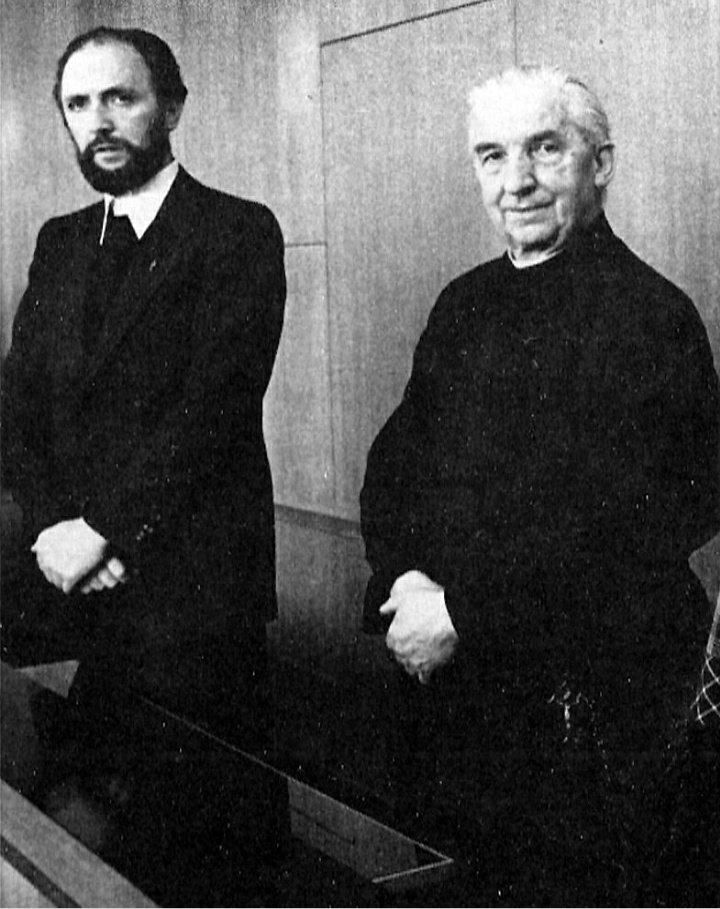
Family Friend Says "She's Possessed!"
In 1973 Anneliese went to San Damiano with a family friend, Mrs. Thea Hein, who was one of the first to notice the apparent change in Anneliese. While on this pilgrimage, she noticed that Anneliese was physically unable to drink the Holy Water from the spring, and also physically unable to walk past an icon of Jesus Christ, Mrs. Hein was instrumental in implanting the idea of demon possession in both Anna and Anneliese. She did not believe that the doctors who diagnosed Anneliese as an epileptic were correct based on the symptoms she had observed, and she basically got the ball rolling on getting the Church involved. At one point, Anneliese said to Mrs. Hein: “I am Anneliese, and I will go for your neck and tear it apart.” Then she struck Mrs. Hein in the head violently, and had to be physically restrained. I think Thea was askin’ for it, tbh.
Anneliese's Parents Seek Spiritual Help
During the Summer of 1973, Anneliese began seeing Father Ernst Alt. While a Roman Catholic Priest, the father claimed to have psychic and telepathic abilities. He also asserted that he had a special God-given power to know if a person were under demonic influence or was just physically ill. As a traditionalist, he was deeply suspicious of reforms that the Vatican had recently made in the Catholic church, believing it to be the work of the devil. The Second Vatican Council, informally referred to as Vatican II, was thought of as a means of spiritual renewal, which sought to modernise the Catholic faith, making it able to better handle the changing cultural landscape of the world post-World War Two. A large part of this was the denial of Catholicism’s global supremacy over other religions. Certainly, as part of its efforts towards dialogue with other religions Pope John XXIII invited other Christians outside the Catholic Church to send observers to the Council. Alt claimed to collapse one day while praying for Anneliese, which convinced him that the devil was working against both her and his flock, and only exorcism would help.
In the subsequent trial, psychiatrist would describe Alt as having “an abnormal personality in the wildest sense of the term. Parts of his prehistory, as he reported them, even suggest the presence of a psychosis of the schizophrenic type.” Alt reported that he saw visions of Christ and heard him speaking.
The parallel between Alt and Anneliese could also suggest his influence on her interpretation of events.
Father Alt declared that “she didn’t look like an epileptic” and that he did not see her having seizures. Alt believed she was suffering from demonic possession and urged the local bishop to allow an exorcism. He believed that Anneliese was suffering from atonement possession, devils sent by God to express his disapproval of liberal changes made in the Catholic Church. Anneliese once told Alt, “I want to suffer for other people…but this is so cruel.”
Nope, No Demon Possession Here
In addition to consulting Father Alt, Anneliese would visit Father Herrmann about 10 times from fall of 1973 until summer of 1975. During this time Herrmann not only provided counseling for Anneliese but evaluated her for demonic possession. They would discuss life issues and pray the rosary. While she did tell Herrmann that she felt like she was being controlled, Herrmann found no cause for possession. He additionally noted that Anneliese showed no violent behavior or aversions to any Christian symbols.
Releasing The Exorcist
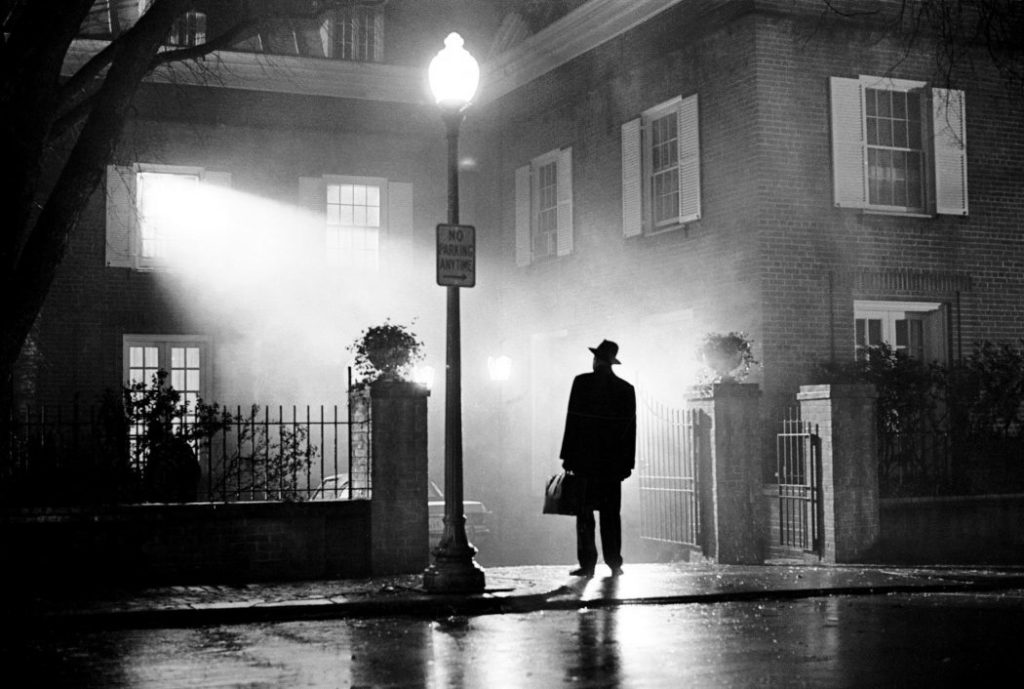
The Exorcist is a 1971 horror novel by American writer William Peter Blatty. The book details the demonic possession of eleven-year-old Regan MacNeil, the daughter of a famous actress, and the two priests who attempt to exorcise the demon. Published by Harper & Row, the novel was the basis of a highly successful film adaption released two years later, whose screenplay was also written and produced by Blatty, and part of The Exorcist franchise.
The novel was inspired by a 1949 case of demonic possession and exorcism that Blatty heard about while he was a student in the class of 1950 at Georgetown University. As a result, the novel takes place in Washington, D.C., near the campus of Georgetown University.
The Exorcism of Roland Doe
Roland was born into a German Lutheran family. During the 1940s the family lived in Cottage City, Maryland. According to Allen, Roland was an only child and depended upon adults in his household for playmates, primarily his Aunt Harriet. His aunt, who was a spiritualist, introduced Roland to the Ouija board when he expressed interest in it.
After Aunt Harriet’s death the family experienced strange noises, furniture moving on its own accord and ordinary objects such as vases flying or levitating when the boy was nearby. The family turned to their Lutheran pastor for help. Long interested in parapsychology, the pastor arranged for the boy to spend a night in his home in order to observe him. When parapsychologist J.B. Rhine learned that the pastor claimed he witnessed household objects and furniture seemingly moving by themselves, Rhine “wondered if Schulze ‘unconsciously exaggerated’ some of the facts.” Schulze advised the boy’s parents to “see a Catholic priest”.
He was then given an exorcism by Jesuits. During the exorcism, the boy allegedly slipped one of his hands out of the restraints, broke a bedspring from under the mattress, and used it as an impromptu weapon, slashing the priest’s arm and resulting in the exorcism ritual being halted. After the family traveled to St. Louis to request help from the bishops there, two priests visited Roland in his relatives’ home, where they allegedly observed a shaking bed, flying objects, the boy speaking in a guttural voice, and exhibiting an aversion to anything sacred.
The next exorcism took place in a hospital. Three priests overseeing the rites stated that words such as “evil” and “hell”, along with other various marks, appeared on the the boy’s body, the mattress began to shake, and Roland broke the nose of one of the priests.
The Production's Curse
The set was said to be haunted. The belief in the occult and paranoia around demons reached a frenzy when the set caught fire and a priest was asked to come in and bless the set. Furthermore, during and shortly after production, several cast and crew members died, not unusual when you think about some of them being already quite old and especially that two of them died after filming of completely normal circumstances, but when you have paranoia and demon lore running on a loop in your head, you’ll connect dots where they don’t exist. In addition, both Ellen Burstyn and Linda Blair sustained injuries while filming, some of which you actually see or hear in the final release. Ellen later called the film’s director a maniac for his grueling and abusive tactics.
Global Release
The movie had its US release December 26, 1973 to initially mixed critical reviews, but the public loved it. It gained 1.9 million its first week, with some in New York waiting in lines around the block during a blizzard just to see it, and in the first month it grossed 7.4 million worldwide (equal to about 44mil today). It was released in Germany September 20th, 1974. In addition, Dick Smith did some of the best practical effects of his career in this movie and it’s worth a watch for that alone, even if you don’t care for horror films. The effects were so convincing, there were people who were physically ill during screening and at least one person sued the production company. So disturbing and realistic was the angiography scene, where the character Regan has a needle placed in her neck resulting in blood spurting, that the medical field still shows it in school as a possible result of placing a catheter too close to a major artery.
Stats - Awards
This was the first horror movie ever included in the Academy Awards ceremony, receiving 10 nominations (including best picture) and winning two.
Rise in Exorcisms
The Exorcist was released upon a world where demonic possession was largely forgotten. While the release of the book in 1971 had already seen a marked upswing in “Possession fever,” the international success of the film suddenly cast a new light on the Rituale Romanum.
For a priest with an already exaggerated belief in his abilities to find demons, the impact on Alt must have been profound. In fact a letter to the Bishop of Wurzburg, he claimed to have been sickened by letters from the Michels… and to have been attacked by swarms of flies and had seen shadowy creatures scurrying about.
The Beginning of the End
She was described as “withdrawn and very religious” by classmates. Parents go through a series of priests trying to find one who will agree to exorcisms, which takes quite a while as most priests think she’s just a very ill person.
She began to force herself to fast because she believed that it would rid her of Satan’s influence. Prior to her death, she had spoke of dying to atone for the sins of the wayward youth and apostate priests of the modern church.
In May 1975, Anneliese suffered severe emotional trauma. Her grandmother, to whom she was deeply attached, passed away; and her sister, Barbara, moved away to pursue a career. Authors writing on the subject of Anneliese’s alleged possession are keen to stress that this young woman was exceptionally sensitive and increasingly unable to cope with the world around her. Indeed, during a conversation with Father Alt a few months prior, on 9th September 1974, Anneliese had made the statement: “I cannot cope with reality.”
Some authors refer to this as the moment Anneliese suffered a mental breakdown, hallmarked by the development of multiple personalities, known today as a dissociative disorder. At the time, however, demonic possession was regarded as the increasingly likely explanation for Anneliese’s condition. It is also during this time that the first assertions emerged of possession by the spirits of: Cain – Judas – Nero – Fleischmann – Hitler – Lucifer.
The "Proof" of Possession
At first glance one of the most convincing portions of the exorcism is that Anneliese switch between German and Latin fluidly. There was also smatterings of other languages encountered. This is impressive until you understand that she was indeed fluent in Latin. Had been extensively exposed to Greek as part of the Latin studies. She was also frequently exposed to a variety of other European languages at school including English and Polish.
Many of the unknown events that Anneliese spoke of were historic. As a Latin student, she had spent many years studying Roman history. Her obsession with religion had also given her extensive knowledge of local history, local church history and local shrines.
Two of the other indicators that Alt embraced were the visons of “demonic faces,” unheard voices and unexplained sounds. As we discussed earlier, visual hallucinations are often symptomatic of both epilepsy and psychosis.
It is impossible to ask the question of “why” without considering the role played by the priest. Instructions for the Rite include that the priest “be immune to any striving for human aggrandizement… and be revered not alone for his office but for his moral qualities.” In other words, the Exorcist must not be seeking fame of fortune in his efforts to remove demons from a suffering Christian.
Rites of Exorcism - Approved
Throughout 1975, Alt and Father Arnold Renz visited Anneliese. Based mostly on Alt’s ability to detect demons, the priests decided that she was indeed possessed. Jos
On September 24, 1975, the first of the 67 exorcism rites rituals was given. Father Arnold Renz assisted Father Ernst Alt with the “Ritual Romanum”.
With the local bishop’s permission, almost all of the exorcisms were recorded, which is now customary. Anneliese requested that these tapes be made public as proof of God and the Devil and to impart messages to the youth of the world: to be pious, that abortion is murder, modern priests were shit-heads and traditionalism is where it’s at…you get the idea.
Meet Her Demons
- Anneleise claimed to be possessed by the leader of the Nazi party, Adolf Hitler (the other demons said “he might say a lot of words, but he doesn’t have anything interesting to say”, lol). Remember, Josef, her father, fought in the war and came back with PTSD, so Hitler essentially robbed her of a present and doting father.
- Lucifer seemed to only be mentioned because she said “There are five of us” and then named only four. When prompted to give the last name by Alt, she said “we lied about him” and then Alt prompts her with “Lucifer?”
- Cain from the Biblical story of Cain and Abel. He was the first murderer, killing his brother after God favored his sacrifice instead of Cain’s. Some traditional interpretations consider Cain to be the originator of evil, violence, or greed. According to Genesis, Cain was the first human born and Abel was the first to die. Also, these two were the sons of the first humans, Adam and Eve… who later went on to have other sons and daughters… so, you know…those kids were fuckin’ each other…the Bible is pretty gross at times.
- Nero, best known for his debaucheries, political murders, persecution of Christians and a passion for music that led to the probably apocryphal rumor that Nero “fiddled” while Rome burned during the great fire of 64 A.D.
- Judas Iscariot was one of the Twelve Apostles, notorious for betraying Jesus. Judas’ surname is probably a corruption of the Latin sicarius meaning murderer.
- Fleischmann was a local womanizing priest from the 1500s that was also said to have killed a man. Alt admitted discussing with Anneliese’s parents. One week later he became a named demon possessing the girl.
- Legion was tacked on later in the possession. Legion is a demon or group of demons, particularly those in two of three versions of the exorcism of the Gerasene demoniac, an account in the New Testament of an incident in which Jesus performs an exorcism and sends the collective of demons into some pigs who run into the water and drown. …fucked up.
As Anneliese believed she was atoning for the sins of many through her possession and exorcism, and act many official Saints have said to take on, the only demon who responded to questions during rites, “Judas”, said “In this century — will be more saints than ever.”
During the exorcism, the “demons” mention that Barbara Weigler is helping Annaliese through the rites, referring to her as “that sow that built that thing.” All of this is sad but that part made me laugh.
Her boyfriend, Peter, was constantly involved in most of this process. He would often drop by the house, expected or not, to spend time with Anneliese. Even though for the most part, she could not talk unless she was blaspheming or raging out, there is one event which he recalls in which Anneliese suddenly grew stoic, stared him right in the eyes and said in a clear, unimpeded voice: “I am of a stony heart.”. Also worth noting, on many – many – occasions, Anneliese was physically abusive to both her sisters and Peter, violently throwing them to the floor, and assaulting them on some occasions literally from dusk until dawn.
While demonic manifestations are haunting her, Anneliese receives encouragement and “inner locutions” from the angels, the Virgin Mary, and sometimes from the Savior Himself. When she was asked to explain the nature of these messages, Anneliese said she does not “hear” or “see” something in particular, but is being made only to understand. About the demons, she confessed that she felt like a spectator when they were using her voice to answer the priests’ questions. She also compared the exorcism experience to that of putting your hand “into a wasp’s nest”.
Anneliese: Never would I have thought that it could be so horrible. I was thinking to myself: “I want to suffer for other people, so that they don’t go to Hell. But not that it is so difficult, so dreadful, so horrible… Sometimes, you think: “Suffering is easy”. But when it gets real hard… you don’t want to take a single step.
Father Renz: Yes. We can talk about suffering lightly until it’s us who are suffering.
Anneliese: Yes. That’s true. Father Arnold, it’s so difficult to imagine how they can force you. Once they do, you have no more control over yourself.
Father Arnold: Yet, you’re making a contribution because you are willing to accept this.
Anneliese: They deprive you of your will to do anything, father.
Father Renz: This comes from the fact that you earlier said: “Yes”.
Priming | Co-Occuring Delusions
Doctrinaire:
A person who tries to apply some doctrine or theory without sufficient regard for practical considerations; an impractical theorist.
Inductive Reasoning:
A method of reasoning in which the premises are viewed as supplying some evidence for the truth of the conclusion.
“Doctrinaire Induction” in relation to Anneliese suggests that it was the exorcists who provided Anneliese with the basis for her demonic behavior. Psychiatrists who testified during the trial spoke about the “Doctrinaire Induction”, which in relation to Anneliese explains that she accepted her behavior as a form of demonic possession, mainly because the exorcists introduced much of the idea to her and reinforced it with each exorcism. In 1984, German bishops and theologians petitioned Rome to change the exorcism rite. They concluded that speaking directly or “imperatively” to the Devil, that is, “I command thee, unclean spirit . . . ” only confirms to the patient that they are without a doubt possessed.
From a medical perspective, it can be asserted that the influences of Anna Michel and Father Alt could have contributed to the dissociative disorder (multiple personalities she exhibited during the exorcisms).
Anneliese Predicts the End
In April 1976, Anneliese became aware that this experience will cost her life: “I now know what will happen, I know that this summer will be terrible and hard, and I know that I will not survive. Nobody can tell me something else. I will not survive” (confession recorded by Pater Ernst Alt). However, she is made to understand that in July, things will reach a solution. Now Anneliese’s last worry is that her family doesn’t leave her in the doctors’ hands, which most probably would send her to be institutionalized in the psychiatric clinic from Lohr. Thus, she asks her closest to promise her that, despite her worsening health condition, they will not seek medical advice.
Decline Exacerbated by Physical Punishment
Anneliese carried out a number of highly disturbing actions. She licked her own urine off the floor. She ate flies, spiders and coal. She bit off the head of a dead bird. In one instance, she crawled under a table and barked like a dog for two days. She could often be heard screaming through the walls for hours. Tearing off her clothes and urinating on the floor became a regular occurrence.
The day before her death, Anneliese’s last words to the exorcists were to “Beg for Absolution.” To her mother, she said, “Mother, I’m afraid.”
Her final exorcism was done June 30, 1976. She was too weak to perform the genuflections by herself and had to be helped by her parents.
Death: July 1, 1976
Anneliese Michel lost the fight with her demons on July, 1, 1976.
Her father immediately went to get a natural cause death certificate. The examining physician refused based on the emaciation of the body as well as multiple wounds and contusions. At her time of death, Anneliese Michel weighed just over 68 pounds, was found to have several fractured teeth, both eyes were blackened, she had bruises everywhere, the ligaments in her knees were both ruptured from repeated double genuflection (an act of reverence consisting of falling on one – single – or both – double – knees). Father Alt tried to explain some of the injuries as stigmata but there was never any evidence of this.
During her autopsy she was also found to have suffered from pneumonia in her last weeks, likely suffering from a high fever in her last days. Her post mortem report stated malnutrition and dehydration as her cause of death. The state prosecutor stated that if she had received proper medical care and nutrition even one week earlier, she would have survived. Despite rumors of a doctor having attended the exorcisms to monitor her condition, there is no evidence of any doctor ever being present.
Her photos during the last days of her life are truly haunting and are often the first image that comes to mind when you think of this case. What I find disheartening is that most people use these images as proof that she was possessed instead of realizing that it’s only proof that she was horrifically abused by both others and herself until her final moments. I don’t like to think of her in these images, she was a person, after all. I prefer to think of her as she truly was in life before her illness and the exorcisms that cost her her personality, dreams, and life.
I’ve attached a gallery of them here but, please be warned, it’s very difficult to see. While I think it’s important to see evidence of the risk of what most people consider innocuous beliefs, the abuse that can happen during exorcism rites, and the true cost of what her priests and parents allowed, it’s also important not to punish yourself with things you cannot unsee.
Her Gravesite Becomes a Place of Pilgrimage
Today, Anneliese’s grave is a place of pilgrimage. Young people from all over Germany go there to pray for and bring a tribute to the girl who turned demonic possession into an assumed martyrdom. Anneliese became an icon for some Catholics who felt modern, secular interpretations of the bible were distorting the ancient, supernatural truth it contains.
“The surprising thing was that the people connected to Michel were all completely convinced that she had really been possessed,” remembers Franz Barthel, who reported on the trial for the regional daily paper the Main-Post.
Most recently, the sawmill which is still owned by her siblings and her house, which has been abandoned for a long time, was the site of arson, most likely caused by a fire near her gravesite. Some assholes photoshopped images of her and what appears to be a priest or perhaps her mother on the flames of the house, because people are garbage.
Court Proceedings

Lead Prosecutor Karl Stenger indicted Josef and Anna Michel as well as Fathers Ernst Alt and Wilhelm Renz of negligent homicide on July 14, 1977. It was suggested that they could receive a sentence of five years in prison.
Bishop Josef Stangl of the diocese of Wurzburg and a Jesuit priest, Adolf Rodewyk of Frankfurt, two other churchmen under investigation in the case, were not indicted.. Bishop Stangl approved the exorcism on the recommendation of Father Rodewyk, an 82‐year‐old expert on the rite. The bishop also appointed the two priests—Fathers Alt and Renz—to carry it out.
Mr. Stenger said the bishop and Father Rodewyk had no direct contact with Miss Michel or her parents during the exorcism, and did not know she was not receiving medical treatment.
"Cries of a Woman Possessed - Michael Getler, April 21, 1978 - For The Washington PostA series of doctors who have testified at the trial have all basically told the court that the woman died of a combination of epilepsy, mental disorders and an extreme religious environment which, in the words of Professor Hans Sattes of Wuertzburg University, added up to "a spiritual sickness and heavy psychic disturbance.
Evidence from the trial suggests that Alt wanted to complete an exorcism to allow him to write books and lecture. While the actual exorcisms were recorded on audio tape, no effort of any kind was made to record the preceding evidence.
Fathers Alt and Renz were defended by church appointed lawyers. The parents were represented by one of Germany’s top lawyers, Erich Schmidt-Leichner, who represented several Nazi war criminals in the Nuremberg trials.
Schmidt-Leichner asserted that not only is exorcism legal, but that the German constitution protected citizens in the unrestricted exercise of their religious beliefs. One of Anneliese’s sisters explained to the court during the 1978 trial that Anneliese did not want to go to a mental hospital where she would be drugged and forced to eat.
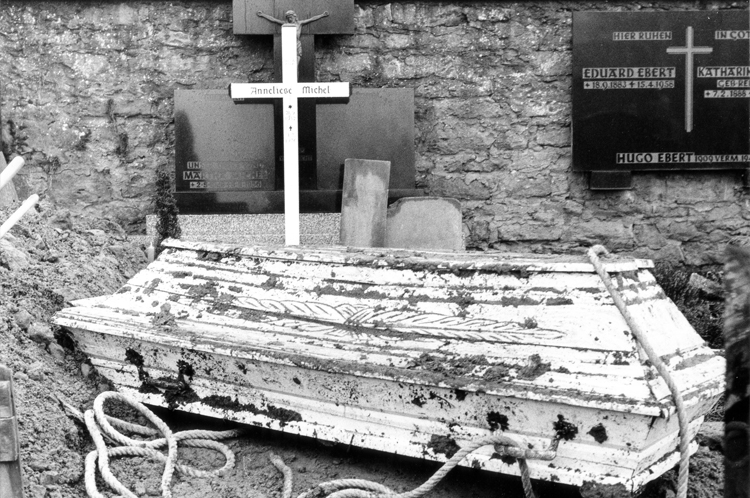
Exhumation of Anneliese's Remains
On February 25, 1978, almost two years after her death, the deceased body of Anneliese Michel was dug up and moved to a new oak-coffin lined with tin. Her parents’ desire to move her from the cheap coffin in which she was buried was allegedly used as an excuse to exhume her body. Instead, they were acting on a message received from a Carmelite nun from the district of Allgaeu in southern Bavaria. The nun had told the parents that she had a vision that their daughter’s body was still intact. Official reports state that the body showed consistent deterioration. Photos of the exhumed body were never released, and Anneliese’s parents were prohibited from witnessing the exhumation.
The Judgment
All defendants were found guilty of negligent homicide and sentenced to six months in prison, suspended with three years’ probation. Bishop Josef Stangl, who approved the exorcism and was investigated by the state but not indicted, said that in the future, he would only approve exorcism if the possessed person agrees to the presence of a doctor during the ritual. He then stated that his actions were permissible and within church law, which was criticized as the church just trying to protect it’s own. A letter from Bishop Josef Stangl to the court further stated while he had authorized the exorcism he was not made aware of any of the pre-existing medical or mental conditions that Anneliese was enduring. The Bishop was never called to testify before the court.
Anna Michel's Questionable Statements
Up to at least 2007, according to this (kind of unreliable) source, Anna Michel claimed to still be dealing with the presence of some wicked entity in her home, though nowhere near to the degree that Anneliese did. She claimed that whatever it is was “left over” from when all of this happens, and that even though weeks or months will go by with no signs of a presence, every so often, something will happen, just to remind her that “it’s still there”. She was also recorded as saying “God told us to exercise our daughter. I don’t regret a thing.”
How Could This Happen?
Honestly, it doesn’t make much sense to me, but people truly buy into the idea of good and evil, demons and devils, and that the soul of a person can be possessed by said demons and devils. You would think that in the 21st century this just wouldn’t be a thing anymore, but it’s still going strong, with multiple cases of abuse and murder every year that can be directly linked to exorcisms.
Hothouse Effect of Social Confirmation
Exorcisms tend to follow a predictable path. The apparent victim of possession’s behavior becomes increasingly erratic, perhaps even violent, until the exorcist casts the demonic spirit out. “Possessed” people may speak in tongues, vomit, become violently ill, or harm themselves. And while these behaviors might seem shocking, they can be easily explained.
Mental issues can cause strange behavior, and people tend to conform to expectations. This means a person experiencing an exorcism is more likely to act in ways he or she has heard of others behaving during exorcisms. Exorcisms sometimes also involve the use of potions, drugs, or fasting, each of which can induce violent illness and strange behavior. Starvation can affect brain function, and the stress of an exorcism may radically alter behavior.
Some exorcism advocates insist that exorcism works. And it very well may. People undergoing exorcisms may enter hypnotic trances, during which time they may be much more suggestible, which means their behavior may later change. The dramatic ritual of an exorcism can also be cathartic for some deeply religious people, and may inspire a change in behavior or personality.
Stigma of Mental Illness
There can be no doubt that some forms of behaviour that would once have been seen as evidence for possession by demons or evil spirits would now be recognised as being caused by neuropathology. Hippocrates, in The Sacred Disease, declared that epileptic convulsions were caused by brain malfunction, not evil spirits. Belief in possession was still widespread some 400 years later, however, when Jesus encountered an individual believed to be possessed but who was, in fact, clearly suffering from epilepsy.
Another condition that would often have been interpreted in a similar manner is Tourette’s syndrome. Interestingly, the first recorded description of a case of Tourette’s may be in Malleus Maleficarum (or Witch’s Hammer) published in the 15th century by Jakob Sprenger and Heinrich Kraemer. This notorious book served as a guide for identifying witches and the possessed and included a description of a priest whose tics were thought to be a result of possession by the devil. Although the symptom that people most readily associate with Tourette’s syndrome is vocal outbursts of foul language, this symptom is in fact quite rare, affecting only around 10% of sufferers. Having said that, this is probably the main symptom that, in times gone by, would have led to suspicion of possession.
Socially Useful Drama
Scapegoating and Memetics

Literary critic and philosopher Kenneth Burke first coined and described the expression scapegoat mechanism. These works influenced some philosophical anthropologists, such as Ernest Becker and René Girard.
Girard developed the concept much more extensively as an interpretation of human culture. In Girard’s view, it is humankind, not God, who has need for various forms of atoning violence. Humans are driven by desire for that which another has or wants (mimetic desire). This causes a triangulation of desire and results in conflict between the desiring parties. This mimetic contagion increases to a point where society is at risk; it is at this point that the scapegoat mechanism is triggered. This is the point where one person is singled out as the cause of the trouble and is expelled or killed by the group. This person is the scapegoat. Social order is restored as people are contented that they have solved the cause of their problems by removing the scapegoated individual, and the cycle begins again. The keyword here is “content”.
Scapegoating serves as a psychological relief for a group of people. Girard contends that this is what happened in the narrative of Jesus of Nazareth, the central figure in Christianity. The difference between the scapegoating of Jesus and others, Girard believes, is that in the resurrection of Jesus from the dead, he is shown to be an innocent victim; humanity is thus made aware of its violent tendencies and the cycle is broken.
Memetics is the study of information and culture based on an analogy with Darwinian evolution. The term meme was coined in Richard Dawkins’ 1976 book The Selfish Gene, but Dawkins later distanced himself from the resulting field of study. Analogous to a gene, the meme was conceived as a “unit of culture” (an idea, belief, pattern of behaviour, etc.) which is “hosted” in the minds of one or more individuals, and which can reproduce itself in the sense of jumping from the mind of one person to the mind of another. Thus what would otherwise be regarded as one individual influencing another to adopt a belief is seen as an idea-replicator reproducing itself in a new host. A meme’s success may be due to its contribution to the effectiveness of its host.
The Gerasenes exorcism plays a key role in Rene Girard’s theory of the Scapegoat. In his analysis, the opposition of the entire city to the one man possessed by demons is the typical template for a scapegoat. Girard notes that, in the demoniac’s self-mutilation, he seems to imitate the stoning that the local villagers would likely have attempted to use against him to cast him out of their society, while the villagers themselves show by their reaction to Jesus that they are not primarily concerned with the good of the man possessed by demons:
“Notice the mimetic character of this behavior. As if he is trying to avoid being expelled and stoned in reality, the possessed brings about his own expulsion and stoning; he provides a spectacular mime of all the stages of punishment that Middle Eastern societies inflict on criminals whom they consider completely defiled and irredeemable. First, the man is hunted, then stoned, and finally he is killed; this is why the possessed lived among the tombs. The Gerasenes must have had some understanding of why they are reproached or they would not respond as they do. Their mitigated violence is an ineffective protest. Their answer is: ‘No, we do not want to stone you because we want to keep you near us. No ostracism hangs over you.’ Unfortunately, like anyone who feels wrongfully yet feasibly accused, the Gerasenes protest violently, they protest their good faith with violence, thereby reinforcing the terror of the possessed. Proof of their awareness of their own contradiction lies in the fact that the chains are never strong enough to convince their victim of their good intentions toward him.
“But in these cases it is not the scapegoat who goes over the cliff, neither is it a single victim nor a small number of victims, but a whole crowd of demons, two thousand swine possessed by demons. Normal relationships are reversed. The crowd should remain on top of the cliff and the victim fall over; instead, in this case, the crowd plunges and the victim is saved. The miracle of Gerasa reverses the universal schema of violence fundamental to all societies of the world.”
Social Contracts
“The sociocognitive approach argues that all of these phenomena reflect learned patterns of behaviour that constitute particular recognised roles within specific cultural contexts.
“Although it may not always be immediately obvious, there are often benefits to enacting the role of being possessed. Indeed, in many societies, certain forms of possession are welcomed. For example, glossolalia, or “speaking in tongues”, is encouraged in many western Christian societies and is interpreted as possession by the Holy Spirit. During glossolalia, the individual produces vocalisations of meaningless syllables. Although these may sound superficially like a foreign language, analysis shows them to have no true linguistic structure whatsoever. Glossolalia can sometimes involve dramatic behaviour such as convulsions, sweating and rolling eyes but can also be much more subdued. The actual form the glossolalia takes is entirely determined by the expectations of the particular religious community involved.
“For less positive forms of possession, the benefits of taking on this role may be harder to identify but they still exist. As Michael Cuneo describes in his excellent book, American Exorcism, the phenomena of alleged possession and exorcism are much more widespread in the US than is officially recognised. For many people, the idea that all of their previous socially and morally unacceptable behaviour was not in fact their fault but due to possession by demons is appealing. Furthermore, once those demons have been exorcised, the repentant sinner is now welcomed back into the loving arms of his or her community.
“Anthropologists have pointed out that in some cultures, those with little or no social influence can let off steam and vent their true feelings towards the more powerful members of their society while “possessed” without having to face any repercussions. They are not held to be responsible for their actions, the possessing spirit is. It is notable that historically in Europe, it was women who were much more likely to be ‘possessed’ than men.”
Source – Chris French Pope Francis and the Psychology of Exorcism and Possession
This Isn't Over

Statistics of Exorcisms
Polls conducted in recent decades by Gallup and the data firm YouGov suggest that roughly half of Americans believe demonic possession is real. The percentage who believe in the devil is even higher, and in fact has been growing: Gallup polls show that the number rose from 55 percent in 1990 to 70 percent in 2007.
In February of 2018, The Tablet, a news source dedicated to Catholicism, reported that the number of exorcisms in Italy had tripled, with experts predicting that around 500,000 requests are made a year.
In a Guardian article, Deborah Hyde states: “Recent UK government statistics suggest that almost 1,500 child-abuse cases a year are linked to notions of witchcraft and demonic possession. The Metropolitan police’s Project Violet was set up to explore child abuse connected to spiritual beliefs. I have written about Nigeria’s “witch children”. And there was the recent horrific case in Nicaragua of Vilma Trujillo, who died after being burned alive. This all demonstrates that the danger is neither localised nor irrelevantly ancient.” It must be said that more recently, that figure has risen to 2,ooo cases of child abuse related to believe in witchcraft and demonic possession.
Exorcisms and Child Abuse
Almost 2,000 suspected religious belief-based child abuse cases were identified by authorities in England in 2018-19, but experts believe the real figure may be far higher because of a lack of awareness over the phenomenon. Child abuse linked to faith or belief, which includes exorcism attempts and violence against suspected “witches”, has already resulted in several deaths.
Children are often targeted because of physical differences or disabilities, mental illness, unusual skills or perceived bad behaviour. The characteristics can be treated as evidence of possession, evil spirits or witchcraft, prompting abusive interventions by family members or faith leaders.
Mr Bartholomew said cases are often linked to misfortune in families, such as financial difficulties, divorce or illness, where children are scapegoated.
“People seeking explanations can look to the spiritual realm and there can be consequences for children,” he added. “We know there have been some faith leaders and organisations involved, but some of the abuse happens in a family context. They diagnose and seek to resolve the problem themselves.”
Recent Deaths Related to Exorcism
This is not even 1% of the deaths related to exorcisms and the believe in demon possession, nor does it take into account the multiple cases of extreme abuse and assault as a result in the beliefs of the assailants that the victims were possessed and in need of exorcisms. This isn’t just a thing that used to happen a lot when people were dumb and prone to suggestibility, this is happening today. It happens all across the world with no regard to class, race, or sex. Belief in demon possession and exorcism is what ties it together.

